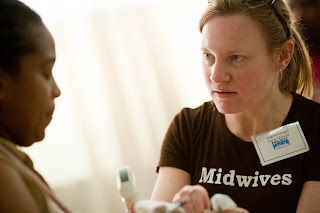 Veteran Project HOPE volunteer Earl Rogers will be serving aboard the USNS Mercy during the Pacific Partnership 2010 as a pharmacist in Vietnam and Cambodia. Earl first served aboard the SS HOPE in 1972 in Brazil and has since volunteered in Russia, Ukraine, Lithuania, Liberia, Papua New Guinea and Ghana to name a few. Earl arrived in Vietnam late Thursday night and is preparing to meet the rest of the Project HOPE volunteers on Sunday evening. Here is an excerpt from his blog:
Veteran Project HOPE volunteer Earl Rogers will be serving aboard the USNS Mercy during the Pacific Partnership 2010 as a pharmacist in Vietnam and Cambodia. Earl first served aboard the SS HOPE in 1972 in Brazil and has since volunteered in Russia, Ukraine, Lithuania, Liberia, Papua New Guinea and Ghana to name a few. Earl arrived in Vietnam late Thursday night and is preparing to meet the rest of the Project HOPE volunteers on Sunday evening. Here is an excerpt from his blog:I am in the Seoul airport waiting on my flight to Hanoi. 17 hours in the air wears you out. Korean airlines was okay… pretty good food, but hard to sleep. I finally got about 4 hours of sleep … I will try again on way to Hanoi. The Seoul airport is very nice and everyone seems to be going about their normal business. I was worried since the current trouble with North Korea, but all seems normal. Time here is after 5pm and I think the day is May 27, Thursday, since we crossed the International Date Line.
I had no trouble checking my bag in Richmond. I was worried about it being overweight, but no problem… so far. I had to clear security again when I got off plane in Seoul and had to drink my full, unopened water bottle that I bought in D.C. airport. I can see the mountains of Korea looking north from the Seoul airport... Not sure how far North Korea is, but I don’t think it is far.
I plan to rest Friday, May 28 and look around the area, then Saturday, May 29 take the Halong Bay tour (everyone says it is terrific) and Sunday take the Hanoi city tour. Sunday evening I go to an airport hotel to meet up with the rest of the HOPIES, and we fly out of Hanoi to board the USNS Mercy on Monday morning, hopefully around noon. It will take a while to get us berthing assignments and find the mess hall and get our linen draw and bunks made and get unpacked, and be ready to hit the ground running Tuesday morning. …. Should be fun. More later.































